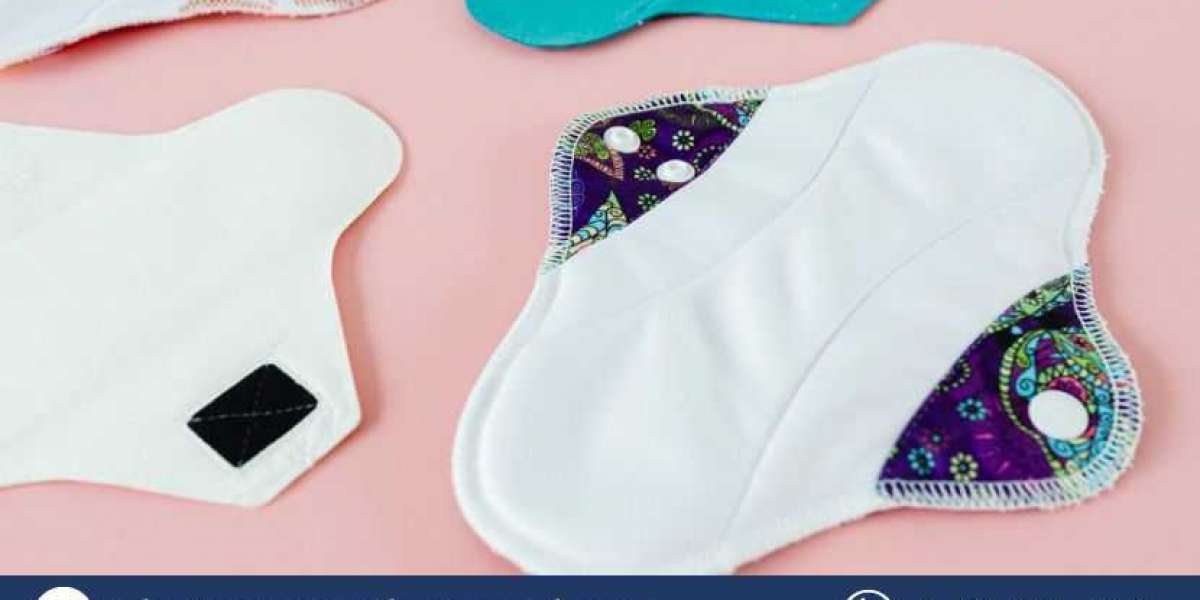Introduction
Reusable pad liners are eco-friendly alternatives to disposable pads, offering women a sustainable and cost-effective option for menstrual care. With growing environmental awareness and the shift towards sustainable products, the demand for reusable menstrual products, including pad liners, has significantly increased. Establishing a reusable pad liners manufacturing plant can be a profitable business opportunity while also contributing to reducing plastic waste. This Reusable Pad Liners Manufacturing Plant Project Report provides a detailed guide on setting up a manufacturing facility for reusable pad liners, covering market trends, raw materials, production processes, equipment, regulatory compliance, and environmental benefits.
Overview of Reusable Pad Liners
Reusable pad liners are fabric-based alternatives to disposable menstrual pads. Typically made from natural, organic, and breathable materials such as cotton, bamboo, or hemp, these liners are designed to be washable and reusable. The key benefit of reusable pad liners is that they help reduce the amount of single-use plastic waste, making them a sustainable choice for consumers.
These pad liners often feature a moisture-absorbing top layer, a waterproof backing layer, and a soft, comfortable inner layer for maximum comfort during use. They are available in different sizes and thicknesses, catering to various needs such as day or night use, heavy or light flow, and different types of underwear.
Market Demand and Opportunities
The market for reusable menstrual products is growing rapidly, driven by environmental concerns and increasing consumer awareness of the harmful effects of disposable products. Reusable pad liners appeal to eco-conscious consumers who are looking for ways to reduce their environmental footprint and avoid the chemicals and synthetic materials used in disposable products. The global shift towards sustainable and organic products further boosts the demand for such items.
The increasing availability of reusable pad liners in health stores, online platforms, and supermarkets has opened up more distribution channels for manufacturers. This presents significant growth opportunities in both domestic and international markets, particularly in countries with growing awareness of environmental sustainability.
Get a Free Sample Report with Table of Contents@
Raw Materials for Reusable Pad Liners
The primary raw materials required to manufacture reusable pad liners include:
- Organic Cotton: Known for its softness, breathability, and absorbent properties, organic cotton is one of the most popular materials used for the top and inner layers of the liners.
- Bamboo Fabric: Bamboo is another sustainable material used for its antibacterial properties, softness, and moisture-wicking capabilities.
- Hemp Fabric: Hemp is durable, absorbent, and environmentally friendly, making it an excellent choice for reusable pad liners.
- Waterproof Backing Material: Materials such as PUL (Polyurethane Laminate) or TPU (Thermoplastic Polyurethane) are used for the waterproof layer to prevent leaks.
- Elastic Bands: These are used to secure the pad liners in place.
Production Process
The production of reusable pad liners involves several key stages:
- Fabric Sourcing and Preparation: The raw fabrics (organic cotton, bamboo, hemp) are sourced from suppliers. They are washed, dyed, and treated to ensure they are soft, absorbent, and safe for use.
- Cutting and Shaping: The fabrics are cut into the required shapes and sizes based on the design specifications. This is done using cutting machines or by hand for precision.
- Layering and Assembly: The pad liner consists of several layers: an absorbent layer (usually organic cotton or bamboo), a waterproof backing layer (PUL or TPU), and an optional additional inner layer for extra absorbency. These layers are sewn or bonded together.
- Elastic Insertion: Elastic bands are added to the edges of the pad liner to help secure it in place during use.
- Quality Control: The finished product undergoes rigorous quality control checks to ensure durability, comfort, and performance. This includes testing for absorbency, waterproofing, and stitching quality.
- Packaging: The pad liners are then packaged in eco-friendly materials, ready for distribution to consumers.
Equipment Required
Key equipment required to set up a reusable pad liners manufacturing plant includes:
- Fabric Cutting Machines: For precision cutting of fabric materials into the desired shapes and sizes.
- Sewing Machines: High-quality sewing machines to stitch the layers together.
- Heat Bonding Machines: For bonding layers without the use of stitching, especially for the waterproof layer.
- Elastic Insertion Machines: To add the elastic bands that help secure the pad liners.
- Quality Control Equipment: Tools for testing absorbency, waterproofing, and overall product durability.
- Packaging Machines: For wrapping and packaging the final product in eco-friendly packaging.
Regulatory Compliance and Standards
Given that reusable pad liners are a personal hygiene product, it is essential to ensure compliance with safety and quality regulations. Manufacturers must follow the relevant regulations in their target markets, such as:
- FDA Guidelines (for markets like the USA): Products must meet health and safety standards for personal hygiene items.
- ISO Standards: Manufacturing processes should adhere to international standards for product safety, hygiene, and environmental impact.
- Environmental Regulations: Since the product is eco-friendly, it is important to ensure that all manufacturing processes, packaging, and materials are sustainable and comply with environmental laws.
Market Trends
- Sustainability: The increasing shift towards eco-friendly, sustainable, and organic products continues to drive the demand for reusable pad liners.
- Customization: Consumers are looking for pad liners that meet their personal needs, including size, absorbency, and material preferences.
- Retail and Online Growth: The availability of reusable pad liners on online platforms and in health-conscious stores offers new growth opportunities for manufacturers.
- Government Support: Many governments are promoting sustainable practices and environmentally-friendly products, further supporting the growth of this industry.
FAQ
What materials are used to make reusable pad liners?
Reusable pad liners are primarily made from organic cotton, bamboo fabric, hemp, and waterproof backing materials like PUL or TPU.What are the benefits of reusable pad liners?
Reusable pad liners are eco-friendly, cost-effective, comfortable, and can be washed and reused multiple times, reducing waste and chemical exposure.How do you ensure the quality of reusable pad liners?
Quality control checks, including absorbency testing, waterproofing checks, and stitching inspections, are conducted during and after production to ensure durability and performance.What equipment is required to manufacture reusable pad liners?
Equipment required includes fabric cutting machines, sewing machines, heat bonding machines, elastic insertion machines, and packaging equipment.What are the environmental benefits of reusable pad liners?
Reusable pad liners help reduce waste, as they can be washed and reused, preventing single-use plastic waste commonly associated with disposable menstrual products.Are reusable pad liners safe to use?
Yes, when made from natural, non-toxic materials such as organic cotton or bamboo, reusable pad liners are safe and gentle on the skin.What is the market potential for reusable pad liners?
The market potential is high, driven by growing consumer demand for sustainable, eco-friendly personal care products and increased awareness about reducing plastic waste.
Media Contact
Company Name: Claight Corporation
Contact Person: Lewis Fernandas, Corporate Sales Specialist — U.S.A.
Email: sales@expertmarketresearch.com
Toll Free Number: +1–415–325–5166 | +44–702–402–5790
Address: 30 North Gould Street, Sheridan, WY 82801, USA
Website: www.expertmarketresearch.com
Aus Site: https://www.expertmarketresearch.com.au





